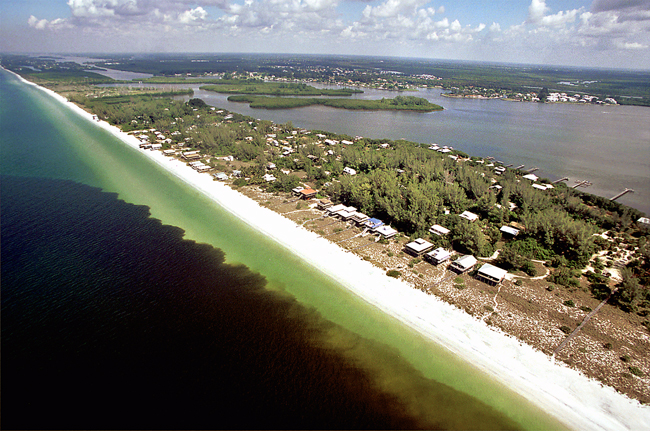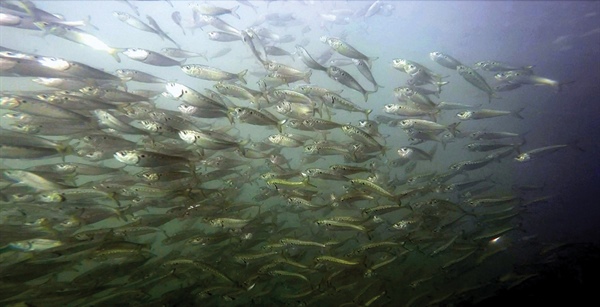
Ecosystem based management has been lauded for years as the best way to manage fisheries, and the NOAA RESTORE Science Program is investing in ecosystem modeling aimed at addressing the complex challenges that must be overcome to make ecosystem based fisheries management a reality. In the Gulf of Mexico, harmful algal blooms, specifically red tides, have a significant ecosystem impact, but their effects on fisheries have been difficult to quantify. With support from the NOAA RESTORE Science Program, David Chagaris and his team, including the NOAA Southeast Fisheries Science, are developing ecosystem models incorporating red tides and forage fisheries that can be applied to fisheries management decisions in the Gulf of Mexico. The model has been used in two discrete decisions regarding gag grouper and Gulf menhaden, but the impact of these decisions could reach far beyond these two study species. These examples could lay the foundation for how the Gulf community moves forward with ecosystem based fisheries management.
The model Chargaris and his team developed for gag grouper dynamics is novel in its inclusion of red tides in spatial modeling. By mapping the area of red tides, the model can quantify fish mortality based on the amount of time spent in the red tide-affected area and the severity of the bloom. Furthermore, the model includes behavior modules that can map how fish might behave in response to ride tides (i.e. swim away from red tide-affected areas) and also accounts for impacts to the food web. The model output is being applied for the gag grouper stock assessment that is currently underway. Chagaris and his team provided red tide mortality rate estimates of gag grouper that could help improve our ability to assess the status of the stock. Furthermore, outputs from the model could also help the Gulf of Mexico Fishery Management Council Scientific & Statistical Committee set annual catch limits that account for red tides.

In the case of Gulf menhaden, the model output includes predator biomass, aggregate fish biomass, predation levels, and community diversity. These outputs can inform not only Gulf menhaden, but also the fisheries for other species that prey on Gulf menhaden. The Gulf States Marine Fisheries Commission has recognized that there is a need for ecosystem based fisheries management for menhaden, in part because of their position in the food web. As a prey species for other key fisheries species, Gulf menhaden are a particularly important species to study and manage. Next year, the Gulf menhaden stock assessment will be conducted, and the NOAA Southeast Fisheries Science Center is working with Chagaris and his team to integrate ecosystem model outputs for evaluating Gulf menhaden’s role in the ecosystem.
Ecosystem based fisheries management is a promising, but lofty, goal, and its practice in the Gulf of Mexico is arguably behind other regions of the United States. Furthermore, its use to guide decision making has proven to be exceedingly complicated and difficult to perform. Chagaris hopes that his work will help resource managers in the Gulf establish a strong foundation for this potentially transformative approach to natural resource management. As NOAA Fisheries proceeds in developing a Gulf of Mexico Fishery Ecosystem Plan, the examples presented by the gag grouper and Gulf menhaden fisheries can serve as an entry point for incorporating these types of models into ecosystem based fisheries management. As Chagaris explained, “we’re hoping to utilize these models as case studies, or management ‘on-ramps,’ when drafting the new Gulf of Mexico Fishery Ecosystem Plan.” In cooperation with NOAA RESTORE Science Program, his team is dedicating its expertise to furthering the development of ecosystem based fisheries management in the Gulf of Mexico. Chargaris and his team are laying the essential groundwork for transitioning promising advances in ecosystem knowledge into a management practice.

Written by Jeanne Bloomberg
 Official websites use.gov
A .gov website belongs to an official government organization in the United States.
Official websites use.gov
A .gov website belongs to an official government organization in the United States.
 Secure .gov websites use HTTPS
A lock or https:// means you’ve safely connected to the .gov website. Share sensitive information only on official, secure websites.
Secure .gov websites use HTTPS
A lock or https:// means you’ve safely connected to the .gov website. Share sensitive information only on official, secure websites.